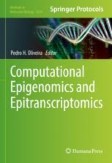Search
Search Results
-

-
Introduction
As the amount of biological data grows, the task of understanding existing data becomes increasingly important, and this is largely a task best...
-
Looking at Very Small Things
You can’t understand a system as complicated as a living being without first gathering information about it. Over the centuries, biologists have come...
-
Other Ways to Use Biology for Biological Experiments
Before a cell can start dividing its cytoplasm, it first must create (or replicate) a second copy of its genome. The process involves two steps:...
-
Bioinformatics
Biologists are drowning in data. Increasingly sophisticated techniques for automation and parallelism are generating ever-greater quantities of raw...
-
How Cells Work: The Basics
Deoxyribonucleic acid—DNA—is perhaps the most famous molecule in the world. If you close your eyes, you can probably picture its iconic double-helix...
-
Why Is Biology Hard?
Biology is a never-ending ocean of complexity. Although the basic mechanics of processes like DNA transcription are the same across most—if not...
-
Manipulation of the Very Small
Imagine, if you will, that you’ve found an old desktop computer, and you want to figure out how it was made. The more detailed the better—ideally,...
-
Reprogramming Cells
Biologists have come up with a lot of clever ways to sort and analyze cellular processes, but even gene chips and mass spectroscopy are still,...
-
Genetic Architectures at the Individual Level
Mendel explained, in the second half of the nineteenth century, the inheritance of certain traits as the action of pairs of factors—one-locus...
-
DNA Modification Patterns Filtering and Analysis Using DNAModAnnot
Map** DNA modifications at the base resolution is now possible at the genome level thanks to advances in sequencing technologies. Long-read...
-
Predicting Pseudouridine Sites with Porpoise
PseudouridinePseudouridine is a ubiquitous RNAModificationRNA modification and plays a crucial role in many biological processes. However, it remains...
-
Nanopore Direct RNA Sequencing Data Processing and Analysis Using MasterOfPores
This chapter describes MasterOfPores v.2 (MoP2), an open-source suite of pipelines for processing and analyzing direct RNA Oxford Nanopore sequencing...
-
Data Analysis Pipeline for Detection and Quantification of Pseudouridine (ψ) in RNA by HydraPsiSeq
Pseudouridine, a modified RNA residue formed by the isomerization of its parental U nucleotide, is prevalent in a majority of cellular RNAs; its...
-
Map** of RNA Modifications by Direct Nanopore Sequencing and JACUSA2
RNA modifications exist in all kingdom of life. Several different types of base or ribose modifications are now summarized under the term...
-
Integrating Single-Cell Methylome and Transcriptome Data with MAPLE
As a mechanism of epigenetic gene regulation, DNA methylation has crucial roles in developmental and differentiation programs. Thanks to the recently...
-
Sequoia: A Framework for Visual Analysis of RNA Modifications from Direct RNA Sequencing Data
Oxford Nanopore-based long-read direct RNA sequencing protocols are being increasingly used to study the dynamics of RNA metabolic processes due to...
-
Impact of Cognitive Priming on Alzheimer’s Disease
Alzheimer’s disease is a progressive neurodegenerative disease which spreads increasingly, and subjective cognitive decline (SCD) is an early state...
-
Application of Graphs in a One Health Framework
The One Health framework, which advocates the crucial interconnection between environmental, animal, and human health and well-being, is becoming of...
-
Graph-Based Disease Prediction in Neuroimaging: Investigating the Impact of Feature Selection
In biomedical machine learning, data often appear in the form of graphs. Biological systems such as protein interactions and ecological or brain...
